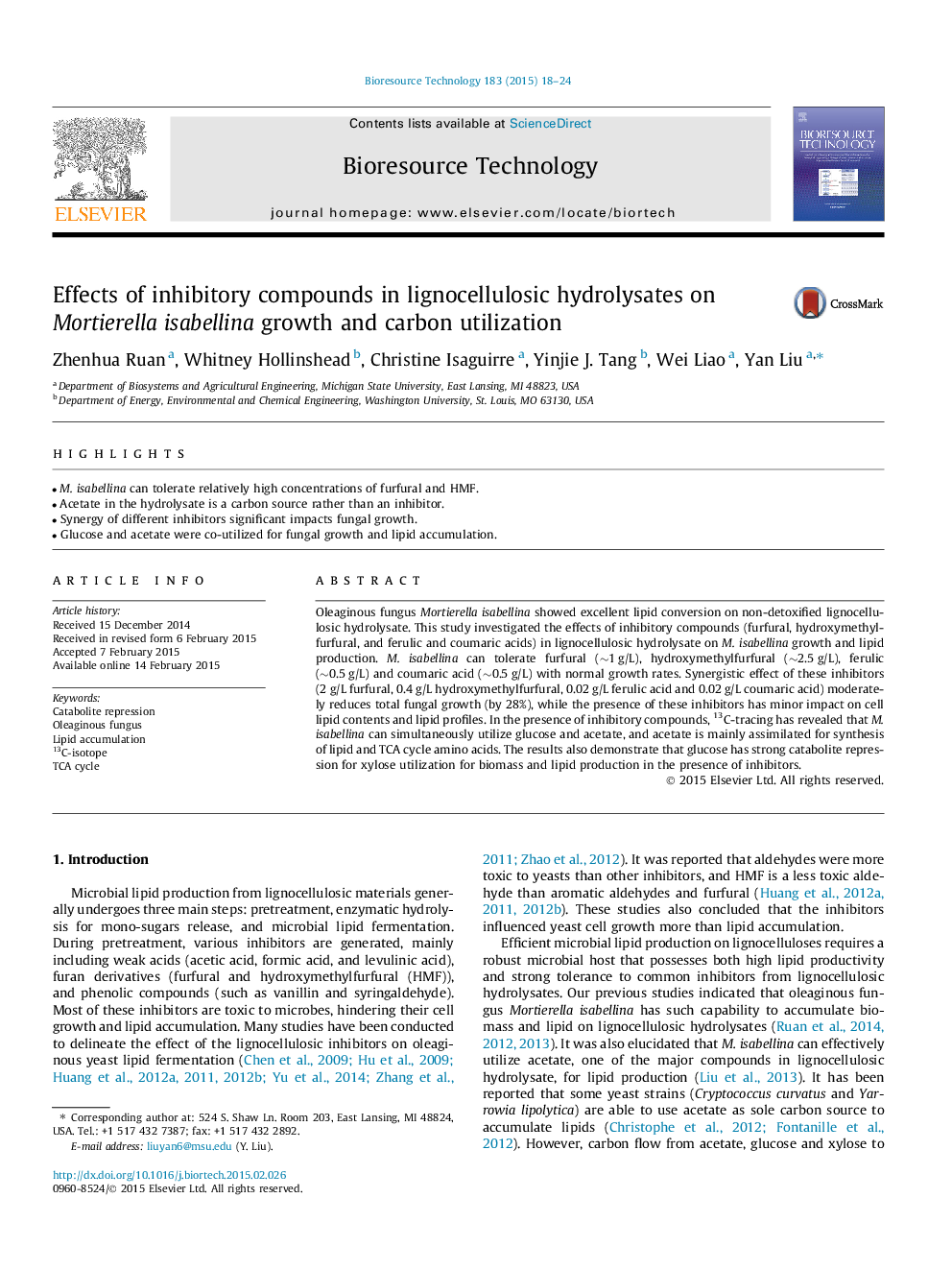| Article ID | Journal | Published Year | Pages | File Type |
|---|---|---|---|---|
| 679884 | Bioresource Technology | 2015 | 7 Pages |
•M. isabellina can tolerate relatively high concentrations of furfural and HMF.•Acetate in the hydrolysate is a carbon source rather than an inhibitor.•Synergy of different inhibitors significant impacts fungal growth.•Glucose and acetate were co-utilized for fungal growth and lipid accumulation.
Oleaginous fungus Mortierella isabellina showed excellent lipid conversion on non-detoxified lignocellulosic hydrolysate. This study investigated the effects of inhibitory compounds (furfural, hydroxymethylfurfural, and ferulic and coumaric acids) in lignocellulosic hydrolysate on M. isabellina growth and lipid production. M. isabellina can tolerate furfural (∼1 g/L), hydroxymethylfurfural (∼2.5 g/L), ferulic (∼0.5 g/L) and coumaric acid (∼0.5 g/L) with normal growth rates. Synergistic effect of these inhibitors (2 g/L furfural, 0.4 g/L hydroxymethylfurfural, 0.02 g/L ferulic acid and 0.02 g/L coumaric acid) moderately reduces total fungal growth (by 28%), while the presence of these inhibitors has minor impact on cell lipid contents and lipid profiles. In the presence of inhibitory compounds, 13C-tracing has revealed that M. isabellina can simultaneously utilize glucose and acetate, and acetate is mainly assimilated for synthesis of lipid and TCA cycle amino acids. The results also demonstrate that glucose has strong catabolite repression for xylose utilization for biomass and lipid production in the presence of inhibitors.
